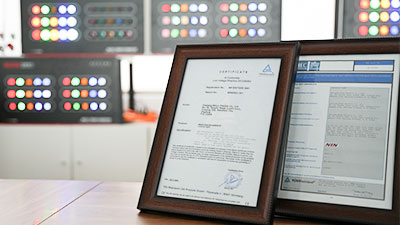1. Reasonable choice of ammeter
(1) According to the accuracy requirements of the measured, the accuracy of the ammeter is reasonably selected. Generally speaking, 0.1-0.2 level magnetoelectric ammeters are suitable for standard meters and precision measurements; 0.5-1.5 magnetoelectric ammeters are suitable for measurement in the laboratory; 1.0-5.0 magnetoelectric ammeters are suitable for use Used in industrial and mining enterprises as electrical equipment operation monitoring and electrical equipment maintenance.
(2) Choose the ammeter with the corresponding limit according to the size of the current on the side. If the measurement limit is too large, the measurement accuracy will decrease, and if the measurement limit is too small, the ammeter will be damaged. In order to make full use of the accuracy of the instrument, the measuring range of the instrument should be selected according to the principle of using the last quarter of the scale as far as possible.
(3) Reasonably choose the internal resistance of the ammeter. The internal resistance of the ammeter is required to be as small as possible.
2. Inspection before measurement
Before measuring, check whether the pointer of the ammeter is aligned with the “0” scale line. If they are not aligned, adjust the "zero adjuster" to make the pointer return to zero.
3. Connection between the ammeter and the circuit under test
(1) When measuring, the ammeter should be connected in series to the low potential side of the circuit under test.
(2) When measuring DC, you need to pay attention to the symbol of the ammeter terminal button. For single-quantity limit ammeters, the measured current should flow into the ammeter from the terminal button marked with "+", and flow out of the ammeter from the terminal button marked with "-"; Multi-limit current meter, the one marked with "*" is the common terminal button, if the other terminal buttons are marked with a "+" symbol, the measured current should flow in from the "+" terminal button and flow out from the "*" terminal button; if other The end button is marked with a "—" symbol, the connection is just the opposite of the above situation.
4. Correct reading
When reading, let the pointer stabilize before taking the reading, and keep the line of sight perpendicular to the dial as much as possible. If the dial has a mirror, the pointer and pointer should be overlapped in the mirror to reduce the error.





 Jan 07, 2023
Jan 07, 2023



